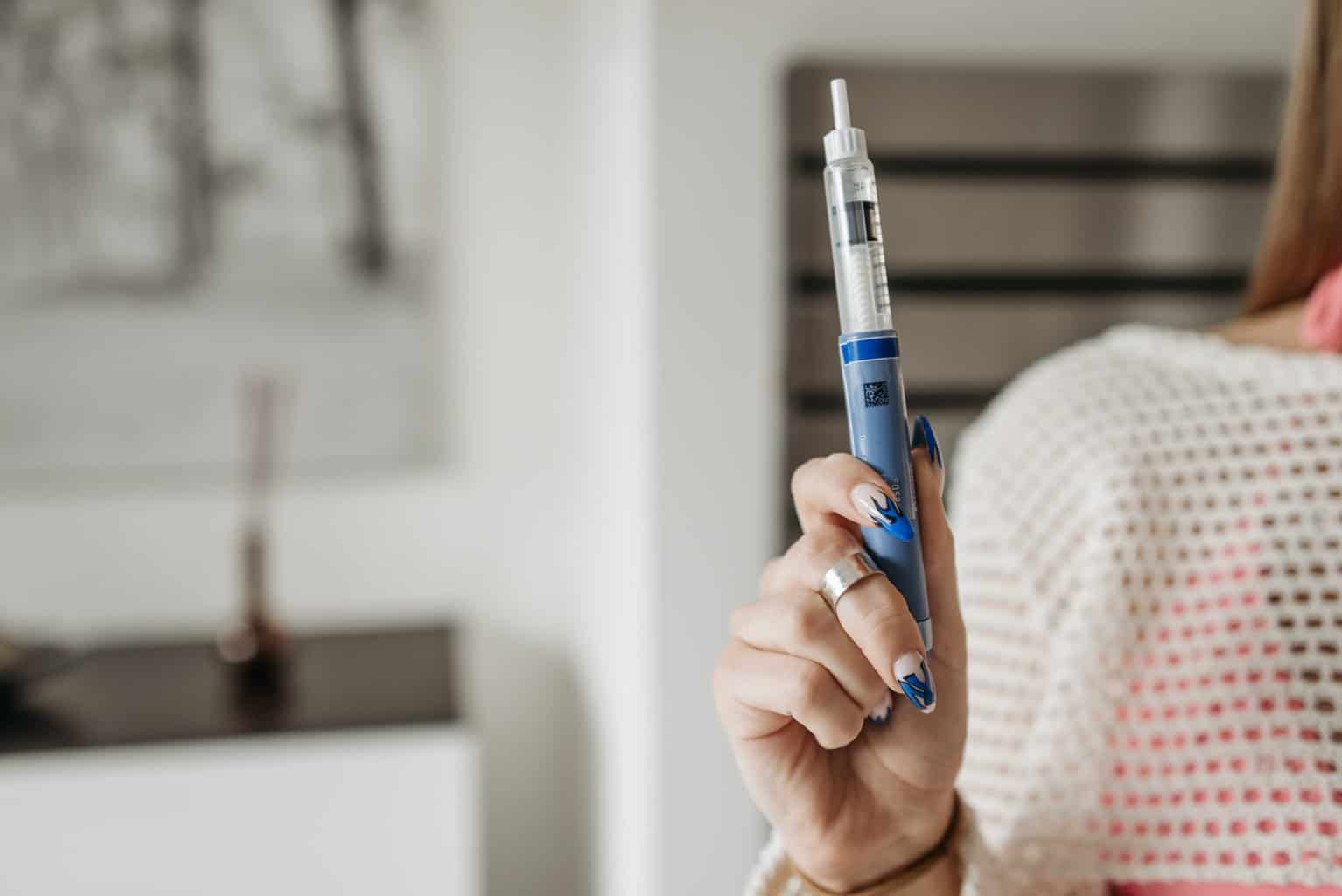- PhentermineLearn more about phentermine and how to get the most from your weight loss journey.
- ResourcesAdditional information and tools to help you make the most of your effort.
- AlternativesLearn more about the most popular weight loss medications and science-backed supplements
Saxenda for Weight Loss: Everything You Need to Know
Published on December 12, 2024

Saxenda, loaded with the mighty liraglutide, serves as a shot for grown-ups looking to drop some weight when their Body Mass Index (BMI) clocks in at 27-plus with extra weight woes in tow, or when it zooms past 30. It’s the pick for youngsters aged 12 to 17 weighing in at 60 kg or above. Uncover all the juicy info right here.
As with any other weight loss medication, Saxenda should be used with proper diet and exercise.
How Does Saxenda Work?
Saxenda can help you lose and maintain weight by working like a glucagon-like-peptide-1 (GLP-1), which regulates hunger and calorie intake, which eventually leads to weight loss. (1)
How to Use Saxenda Pen Injector?
Saxenda is injected under the skin in the upper arm, abdomen, or thigh, once daily and as directed by your physician. Never inject into a muscle or vein.
You will most likely start on a low dose to decrease your risk of abdominal pain, which is a common side effect of Saxenda. After which, your dose may be gradually increased. Follow your doctor’s instructions carefully.
Before using Saxenda, check for particles or discoloration. If present, do not use the liquid. Clean the injection site with alcohol. Change the site each time to lessen injury under your skin.
Use this medication exactly as prescribed and regularly to get the most benefit from it. To avoid missing a dose, inject Saxenda at the same time daily. Remember to follow a low-calorie meal plan and the exercise program your physician has recommended.
Never share your Saxenda pen with another person, even if you can change the needle. There is a high risk of a serious infection. Store and discard it safely after use.
Benefits of Saxenda
You may have lost weight several times in the past, but keeping it off is the most difficult.
How much weight can you lose with Saxenda?
Saxenda was tested on more than 3,700 patients. Eighty-five percent (85%) of which have lost weight. (1)
3 out of 5 have lost an average of 5% or more, which is equivalent to 12 lb.
1 out of 3 people achieved a significant weight loss of more than 10%, which is approximately 23 lb.
6% had lost an average of 47 lb.
How Can You Tell If Saxenda is Working?
Patients who take Saxenda normally lose 4% of their weight on their 4-month follow-up appointment. (1)
Things You Should Know About Saxenda
Among the possible side effects of Saxenda are thyroid tumors, including cancer. Tell your doctor if you experience shortness of breath, hoarseness, or trouble swallowing. Check if there is a lump or swelling in your neck. In animal studies, Saxenda caused thyroid tumors, including thyroid cancer. It is still not known if it will also cause tumors in people.
Who Should Not Use Saxenda?
Never use Saxenda if:
- You or any of your family members had MTC or Multiple Endocrine Neoplasia syndrome type 2 (MEN 2).
- You had serious allergic reactions to liraglutide or any ingredients in Saxenda.
- You are pregnant or plan to become pregnant.
Before taking Saxenda, discuss all of your medical conditions with your doctor, including:
- If you are taking other GLP-1 receptor agonist medicines
- Have severe problems like gastroparesis or slow emptying of the stomach or problems with digestion
- Have problems with your liver, kidneys, or pancreas
- Have depression or mental health issues
- If you are breastfeeding. It is not known if Saxenda passes into your breast milk.
Tell your doctor about everything that you take, including prescription and over-the-counter medicines, vitamins, and natural or herbal supplements.
This drug slows stomach emptying. It may likewise affect the way some drugs work and vice versa, especially diabetes drugs like insulin and sulfonylurea.
What Are the Possible Side Effects of Saxenda?
Saxenda may cause serious side effects like: (1)
- Pancreatitis or inflammation of the pancreas. Stop using Saxenda and talk to your doctor immediately if you experience abdominal pain that won’t go away with or without vomiting. The pain may radiate to your back as well.
- Gallbladder problems. Saxenda may cause gallstones and other gallbladder problems. Others may require surgery. Call your doctor if you experience abdominal pain, fever, jaundice, or yellowing of the skin or clay-colored stools.
- Increased risk of hypoglycemia or low blood sugar in diabetic patients, especially those who are taking insulin or sulfonylurea, and among kids aged 12 and above without type 2 DM. Low blood sugar may present with confusion, dizziness, drowsiness, headache, hunger, irritability, fast heartbeat, feeling jittery, shakiness, and sweating. Check your blood sugar before taking Saxenda.
- Increased heart rate. This medication can increase your heart rate even at rest. Contact your doctor if you feel your heart racing or pounding in your chest for several minutes.
- Kidney problems. Patients taking Saxenda may experience nausea, vomiting, or diarrhea, causing dehydration. Dehydration, in turn, may cause kidney failure. To avoid excessive loss of fluids, drink more water. If these symptoms don’t go away or if you cannot tolerate drinking many water by mouth, visit your doctor immediately.
- Serious allergic reactions. Stop taking this drug and seek immediate medical attention if you experience any serious allergic reactions such as rashes or itching, swelling of the face, lips, tongue, or throat, rapid heartbeat, dizziness, and problems breathing or swallowing.
- Suicidal thoughts. Pay close attention to any changes in your mood, behavior, feelings, and thoughts. Speak to a professional soon.
The most common side effects of Saxenda include:
- Constipation
- Diarrhea
- Nausea
- Vomiting
- Headache
- Dizziness
- Fatigue
- Low blood sugar
- Abdominal or stomach pain
- Change in lipase levels in your blood
- Fever (in children)
- Gastroenteritis (in children)
Overdose
If you experience symptoms of overdose like nausea, vomiting, or trouble breathing, call 911 or your local poison control center.
Missed Dose
Take the missed dose as soon as you remember it. If it is near the next dose, skip it. Take your next dose as scheduled. Never double dose to catch up.
Storage
Before using the Saxenda pen for the first time, keep it in the refrigerator. DON’T FREEZE. After use, you may store it at room temperature. Protect from heat or direct sunlight. Discard within 30 days after first use even if it still has some medicine. Keep this away from kids and pets.
Discard properly. Ask your physician or local waste disposal company. Never flush Saxenda in the toilet or kitchen sink drain.
Other Important Notes
- Saxenda should never be shared with others!
- Laboratory or medical tests including fasting blood sugar, kidney function, heartbeat, and weight should be performed regularly to check and monitor for side effects. Ask your doctor for more details.
Frequently Asked Questions:
1. Is Saxenda only for weight loss?
Yes. Saxenda is only used for weight loss. It contains the same active ingredient, liraglutide, as the diabetes drug known as Victoza, However, the latter is used in a lower dose for the treatment of diabetes compared to Saxenda, which treats obesity.
2. How long will Saxenda pen last?
The starting dose of Saxenda is 0.6 mg per day. It will be increased gradually until you reach a full maintenance dose of 3 mg.
At 3 mg per day, 1 pen will last 6 days. For a month, you’ll need 5 pens.
3. Does it work immediately?
Unfortunately, Saxenda doesn’t often work immediately. Others feel the effects of the drug within 1-3 days, but the weight loss will be evident yet.
4. How long can you use Saxenda?
You must not take Saxenda for longer than 12 weeks if you already lost at least 5% when used with proper diet and exercise.
5. What should you eat while on Saxenda?
Similar to other weight loss prescription drugs, patients taking Saxenda are advised to have a reduced calorie diet. Consume watery foods like gelatin and soups. Never lie down right after a meal.

